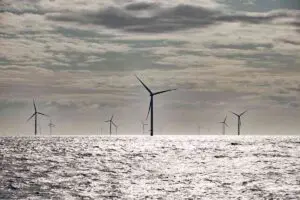Automotive giant Stellantis has signed deal to buy the output of 400MW of new solar projects in Michigan, where the company has pledged to manufacture all of its vehicles with the equivalent of 100% renewable electricity by 2026.
Stellantis, whose stable of 16 car brands includes Jeep, Dodge, Fiat and Alfa Romeo, struck the power purchase agreement with Detroit-based utility DTE Energy through the company’s MIGreenPower voluntary renewable energy program.
While there is no dollar amount affixed to the deal, Stellantis says it expects to be able to guarantee 100% of its electricity use at 70 southeast Michigan sites is matched by solar power by 2026.
When the 400MW of solar is up and running, Stellantis expects to reduce its carbon emissions in North America by 50%, and across all its manufacturing facilities by 30%.
The agreement is part of the Netherlands-based Stellantis’ larger Dare Forward 2030 goal of reaching carbon net zero by 2038, which sets the company an interim target of cutting CO2 emissions in half by the end of the decade.
“While this day and this historic agreement are about clean and efficient power, I’d like to suggest that today is also about the power of partnerships in this new era of sustainable mobility,” said Mark Stewart, COO of Stellantis North America.
“Our success – indeed our survival – will depend more and more on how completely we embrace the values of collaboration and partnership as strategic imperatives that help us achieve breakthrough business outcomes.”
DTE’s MIGreenPower program is among the largest voluntary renewable energy programs in the US, with more than 800 businesses enrolled and over 75,000 residential customers. Stellantis claims its 400MW corporate PPA is the second biggest ever made in the US from a utility.
All up, MIGreenPower customers have enrolled 4 million MWh of clean energy in the program, the equivalent of avoiding more than 3 million tonnes of CO2 emissions each year.
“Investments like this accelerate our state’s transition to clean energy, create jobs and strengthen our state’s economy,” said Jerry Norcia, chairman and chief executive officer, DTE Energy.
Stellantis is also in the process of transitioning its fleet to electric vehicles, but has been slower off the mark on this measure that most of its competitors.
The auto giant is targeting 100% of all sales in Europe and 50% of all sales in the United States to be battery electric vehicles (BEVs) by the end of this decade, with more than 75 models and global annual sales of five million BEVs by 2030.
Its premium and luxury brands – including Alfa Romeo, DS, Lancia, and Maserati – will begin launching only BEVs as of 2025, which will then expand to all Stellantis brands by 2027. Further, 100% of all sales from the company’s premium and luxury brands will be 100% BEV by 2030.










